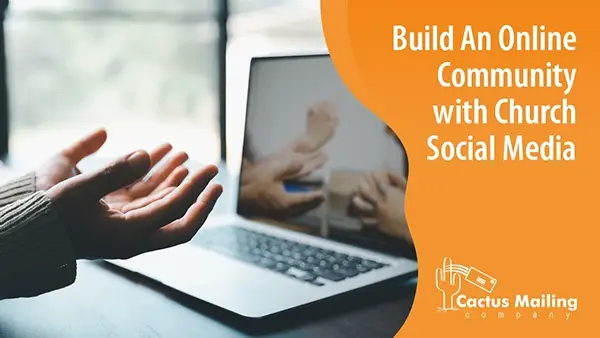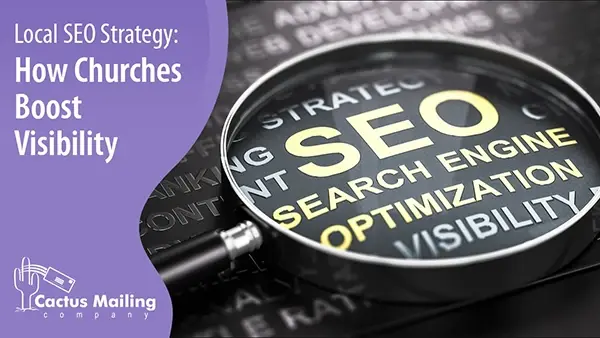We Are Here to Help!
Get pricing details and strategies that will work for your business.
Churches are finding new and innovative ways to reach and engage with their communities. Beyond the traditional Sunday service, church marketing has become crucial to fostering connection, building relationships, and sharing the message of faith.
Churches can strategically employ various tools such as social media platforms for outreach initiatives, podcasts and video content to disseminate impactful messages and sermons, direct mail campaigns to connect with a wider audience, and interactive online platforms to engage with the congregation actively. This multi-faceted approach extends the church's reach beyond physical boundaries, creating a sense of community through meaningful interactions.
Explore various church marketing ideas to elevate your church's communication to your target audience.
Tapping into Online Marketing: Google Ads
Google Ads is a powerful church marketing strategy for those seeking to expand their online presence and connect with a broader audience. With its extensive reach and precision targeting capabilities, Google Ads allows churches to showcase their messages to individuals actively searching for relevant content or information.
Key Benefits of Google Ads for Churches:
- Targeted Reach: A Google Ad enables churches to reach specific demographics and geographic locations, ensuring their messages resonate with the right audience.
- Cost-Effective Advertising: Churches can set budget parameters and pay only when users engage with their ads, making Google Ads a cost-effective solution for online promotion.
- Immediate Visibility: Through the strategic use of keywords and ad placements, churches can achieve immediate visibility in Google search results, ensuring that their messages are prominently displayed.
- Measurable Impact: A Google Ad provides robust analytics, allowing churches to track the performance of their campaigns in real time. This data-driven approach facilitates informed decision-making for ongoing optimization.
- Enhanced Outreach for Events: Whether promoting special services, an upcoming event, or an outreach program, Google Ads provides a platform to maximize visibility and attendance through targeted online promotion.
Utilize Google Ad and Google Ad Grant
Google Ads empowers churches to effectively connect with their communities, promote their mission, and expand their online presence at minimal cost. Crafting an effective Google PPC strategy is vital for church marketing success. Churches can also leverage the Google Ad Grant program for nonprofits, providing up to $10,000 in free monthly advertising. Google Grant can enhance your church's online visibility and further your church's mission without impacting the budget.
- Set Clear PPC Goals: Clearly outline campaign goals, such as increasing church attendance, boosting engagement, or driving online giving. Defined objectives guide content creation and campaign structure.
- Focus on Local SEO Keywords: Incorporate local SEO keywords relevant to the church's mission and activities to enhance visibility in search results. The right keywords reach individuals in the community seeking spiritual or community involvement.
- Implement Geo-Targeting: Focus digital ads on specific local areas by tailoring content to local interests, demographics, and events to maximize engagement within the community.
- Optimize Ad Copy and Use Extensions: Ad copy should resonate with the target audience while highlighting unique aspects of the church. Utilize ad extensions like links, callouts, and location information to provide additional context and encourage engagement.
Consider also integrating Google My Business with Google Ads; churches can create a comprehensive and cohesive online marketing strategy. Having Google My Business ensures targeted outreach through advertising and establishes a vibrant and accurate online presence that resonates with the local community.
Creating Community Connections: Social Media
Social media is a dynamic marketing channel for churches to create, strengthen, and sustain community connections. People connect with stories, and churches can leverage this universal truth to convey their church mission effectively. Platforms like Facebook, Instagram, X (formerly Twitter), and TikTok provide opportunities for inspiration and engagement. By embracing the possibilities offered by these platforms, churches can cultivate a thriving digital community that complements and enhances the sense of belonging and togetherness within their congregations.

You can read our article about building an online community through social media. For now, let's discuss the other benefits of social media for churches:
Real-Time Communication and Updates
- One of the primary advantages of using a social media account for community building is the ability to provide real-time communication and updates. Whether sharing information about an upcoming event, live-streaming sermons, or posting inspirational messages, social media offers a dynamic and immediate marketing channel for churches to connect with their congregation members.
Fostering Interactive Engagement
- A social media platform provides a two-way communication channel, allowing churches to disseminate information and foster interactive engagement. Congregants can actively participate in discussions, share their thoughts, and build connections with community members through comments, likes, and sharing of church marketing materials.
Expanding Reach Beyond Physical Boundaries
- Effective church marketing through a social media account enables church growth. Churches can reach far beyond the confines of the local community, connecting with individuals globally who share similar values and interests. A global reach opens new opportunities for cultural exchange, diverse perspectives, and a more inclusive sense of community.
Showcasing Community Impact
- Social media is a powerful platform for showcasing churches' positive impact on their communities. By sharing stories of outreach programs, community service initiatives, and testimonials from members, churches can inspire and motivate their current congregation and those who may be exploring their faith journey.
Are you thinking about getting help for a Facebook ad or your social media account? Check out Churchfluence's free social media resources or Social Sermons for a complete social media service.
Disseminate Church Messages: Podcasts and Video Content
Podcasts and videos allow members to stay connected, even when unable to attend in person, providing a versatile outreach platform. By embracing these multimedia tools, churches can cultivate a dynamic and inclusive digital community, ensuring their messages resonate with their congregation's diverse preferences and lifestyles.

Podcasts as a Portable Sermon Experience
Podcasts have emerged as a portable and accessible way for churches to extend the reach of their sermons and messages. By converting sermons into podcast episodes, churches make it convenient for a church member to engage with the message at their own pace and on their preferred devices. Whether commuting, exercising, or relaxing at home, congregants can immerse themselves in the church leader's teachings, creating a flexible and personalized spiritual experience.
Tips for Effective Podcasting:
- Consistent Schedule: Establish a regular podcasting schedule to create anticipation and routine for listeners.
- Engaging Topics: Cover various fascinating topics beyond sermons to cater to different interests within the congregation.
- Guest Speakers: Invite guest speakers or community members to bring diverse perspectives and experiences to the podcast.
- Interactive Elements: Incorporate interactive elements like Q&A sessions or listener-submitted questions to enhance engagement.
Bring Sermons to Life through Video Content
Video content adds a visual dimension to disseminating messages, providing a more immersive and engaging experience. Churches can leverage video platforms to livestream services, share sermons, and create compelling visual content that resonates with the congregation. The visual medium enhances the emotional impact of messages, allowing a church member to connect on a deeper level.
Strategies for Effective Video Content:
- Livestream Services: Use platforms like YouTube or Facebook to broadcast live services, ensuring that members can participate remotely when physical church attendance is not possible.
- Short Devotional Videos: Create short, impactful devotional videos that members can easily share on social media, extending the reach of the church's messages.
- Visual Storytelling: Use visuals, graphics, and storytelling techniques to make sermons and messages more memorable and relatable.
- Behind-the-Scenes Content: Share glimpses of church life, interviews with a lead pastor, or highlights from community events to humanize the church experience.
Need help figuring out how to start? Pro Church Tools is dedicated to helping churches navigate communication.
Embracing Traditional Advertising: Direct Mail
Traditional marketing methods retain their value and significance for churches. While digital marketing plays a crucial role, it is enduringly important to embrace traditional avenues to connect with a broader audience. Churches can leverage the tangible impact of postcards in direct mail campaigns to reach individuals who may not be actively engaged online. Complement your church's traditional advertising with digital efforts for a well-rounded and comprehensive marketing strategy that resonates across diverse community preferences and marketing channels.
Traditional marketing methods retain their value and significance for churches. While digital marketing plays a crucial role, there's enduring importance in embracing traditional avenues to connect with a broader audience. Churches can leverage the tangible impact of postcards in direct mail campaigns to reach individuals who may not be actively engaged online. Complement your church's traditional advertising with digital efforts for a well-rounded and comprehensive marketing strategy that resonates across diverse community preferences and marketing channels.
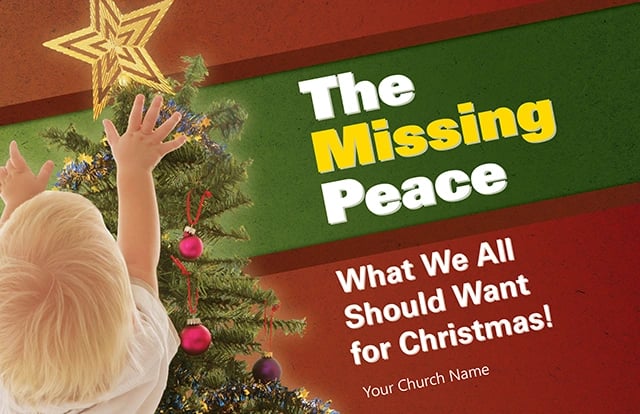
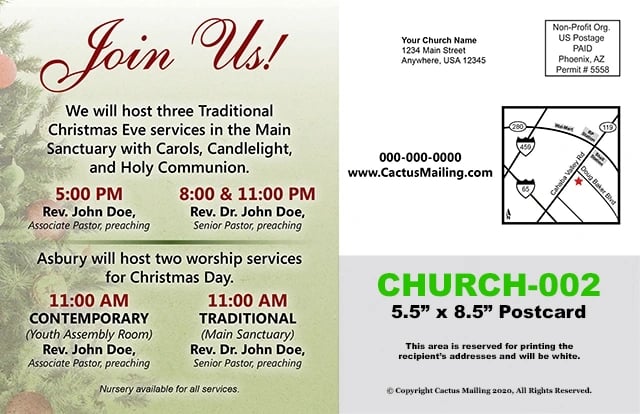
Here are a few strategies for your direct mail campaigns to complement digital efforts, ensuring a well-rounded marketing approach that resonates across various segments of the community:
- Target Audience Identification: Ensure that the content is relevant and engaging for the recipients by tailoring postcard messages to resonate with specific demographics and interests within the community.
- Targeted Mailing List: To ensure focused delivery leverage a specialty mailing list. Churches can use a zip code mailing list, to precisely target specific segments within the community, guaranteeing that their message reaches individuals most likely to be interested and engaged.
- Compelling Content: Presenting the church's message in a way that captures attention and speaks to the recipients' hearts.
- Clear Call to Action: Include a straightforward call to action, guiding recipients toward specific steps such as attending church events, joining community programs, visiting the church for services, or encouraging online giving.
- Professional Design: Invest in high-quality, professional design to make your postcards visually appealing and memorable. Make your church logo prominent and have your design reflect your church brand and church's mission.
- Incorporate Contact Information: Make it easy for recipients to reach out to the church for more information or assistance by including contact details prominently.
- Timing and Frequency: Plan the timing and frequency of postcard mailings strategically to increase effectiveness. Aligning mailings with local events, religious holidays, or seasonal themes can boost engagement and response rates.
- Addressable Geofencing: Implement addressable geofencing to digitally target households that have received your postcards, creating a cohesive cross-channel marketing experience.
- Measurable Objectives: Setting clear, measurable objectives for the postcard campaign helps evaluate its success.
- Budget Considerations: Develop a realistic budget for the postcard campaign to ensure it aligns with the church’s financial resources while effectively reaching the intended audience.
If you want to learn more about direct mail, we have an article on mastering direct mail that can jumpstart your postcard journey.
Promoting Active Community Involvement: Church Events
Church events are pillars of connection and engagement, providing invaluable opportunities for fostering a sense of togetherness in community life. These carefully curated and thoughtfully executed events catalyze active community participation, drawing members closer and extending a welcoming invitation to newcomers.
Welcoming Newcomers into the Fold
- Church events are pivotal in welcoming newcomers and integrating them into the community. Whether it's a welcoming reception, newcomer luncheon, or special orientation event, providing avenues for new members to connect with established ones fosters a warm and inclusive atmosphere. For example, as the Lead Pastor of a United Methodist Church, you must guide parishioners through the dynamic digital age, aligning them with your church mission and the teachings of Jesus Christ.
Nurturing a Sense of Belonging
- Church events become powerful vehicles for nurturing a sense of belonging among community members. By providing spaces for fellowship, shared experiences, and collective celebration, these gatherings create a supportive environment where individuals feel connected, valued, and an integral part of the larger community fabric.

Creating Community-Centric Gatherings
- Churches can strengthen their community impact through strategic community-centric gatherings and collaborations. Building lasting relationships with smaller churches, local businesses, non-profits, and community organizations creates a collective force for positive change. It contributes to the holistic development of the community. The key is to create events that captivate the community's attention and enthusiasm.
Active Participation Beyond the Pews
- Beyond the traditional church setting, actively involving the community in planning and organizing events can enhance engagement. Encouraging any person to volunteer and community members to contribute their ideas, skills, and talents not only adds diversity to the events but also strengthens the communal bonds beyond the confines of the church walls.
Here are various church event initiatives and collaborations that you can get involved in:
- Community Workshops and Seminars: Churches frequently partner with local organizations to offer workshops on various topics, benefiting the community and the church.
- Local Business Sponsorships for Church Events: It's common for churches to build partnerships with local businesses for event sponsorships, providing mutual benefits regarding exposure and support.
- Joint Community Service Projects: Collaborating on community service projects, like clean-up drives or food distribution, is a typical church event to engage with other organizations.
- Community Outreach Programs: Churches often participate in or lead community outreach programs, addressing needs like education, healthcare, or housing.
- Educational Partnerships: Partnering with educational institutions for initiatives like tutoring programs or scholarship efforts is a frequent practice for churches.
- Support for Non-Profit Initiatives: Churches commonly offer support to non-profit organizations, whether through volunteer efforts, use of church resources, or financial contributions.
- Health and Wellness Partnerships: Collaborating on health and wellness initiatives, such as health fairs or fitness programs, is a standard practice for churches looking to contribute to community well-being.
- Shared Event Spaces: Collaborate with other organizations to use church facilities to host a special event or various community-focused activities, optimize resource use, and foster partnerships.
- Networking Events for Small Businesses: Provide a platform for local small business owners to connect, share resources, and build relationships within the community.
- Cultural Exchange Events: A special event to learn about diverse cultural traditions, arts, and customs fosters understanding and appreciation among different community groups, including churches.
Enhancing Connection and Interaction: Church Website
A church's online presence is a gateway to extending its reach, fostering connection, and facilitating meaningful interaction within the community. A church website is a vital bridge between the physical and digital realms, offering endless possibilities. By prioritizing user-friendly design, interactive features, and a commitment to fostering a virtual space that reflects the warmth of the physical church, churches can create an online hub that strengthens community bonds and mirrors the warmth and inclusivity of the physical church environment.

User-Friendly Navigation and Engaging Design
- Creating a user-friendly interface is the foundation of enhancing connection and interaction through a church's website. Easy navigation ensures that seasoned and new community members can effortlessly access information about services, events, and resources.
- Visual appeal is significant in holding the attention of website visitors. An engaging graphic design featuring church logo, high-quality images, well-designed layouts, and aesthetically pleasing elements creates a welcoming online environment. An intuitive design encourages exploration, allowing visitors to delve deeper into the church's offerings and enhances the overall user experience.
Informative and Inspirational Content
- A church website digitally reflects the church's brand and mission, and the community's identity and values. By curating content that informs, inspires, and reflects the church's ethos, the website becomes a source of enrichment for community members. Regularly updated blog posts, sermons, and inspirational messages contribute to a vibrant online presence that mirrors the vitality of the physical church experience.
Interactive Features and Online Resources
- To enhance connection, incorporate interactive features that encourage community participation. Features such as online forums, discussion boards, or prayer request forms provide avenues for members to engage, share, and support one another, fostering a sense of unity even in the virtual realm. Providing online resources such as study materials, devotionals, and special event calendars further enriches the user experience.
Church membership may or may not be a prerequisite for accessing resources on the website. Decide whether your online content is open to everyone seeking spiritual guidance and community connection.
Directories and Church Member Profiles
- Facilitate connection among community members by incorporating directories on church membership and church leader and member profiles on the website. This allows individuals to learn more about their fellow congregants, creating familiarity and providing opportunities for personal connections within the church community.
Responsive Church Communication
- A responsive church website prioritizes communication channels that allow congregation members to contact church leadership and fellow community members easily. Displayed contact information, responsive email systems, and quick inquiry forms create a seamless communication pathway, reinforcing a sense of accessibility and openness.
Secure Online Giving Feature
- A crucial aspect to consider for a church's website is integrating a secure online giving feature. It plays a vital role in facilitating and simplifying the process of tithes, offerings, and donations, which are essential for the financial support of the church's activities and missions. Offer a secure, straightforward, and efficient process for making donations. Implement advanced security measures to protect financial information and personal data. Flexibility allows members to choose their preferred way of contributing. Provide various payment methods, such as credit/debit cards, bank transfers, and digital wallets.
If you don’t have a website yet, you can head to Nucleus.Church for their website-building services.
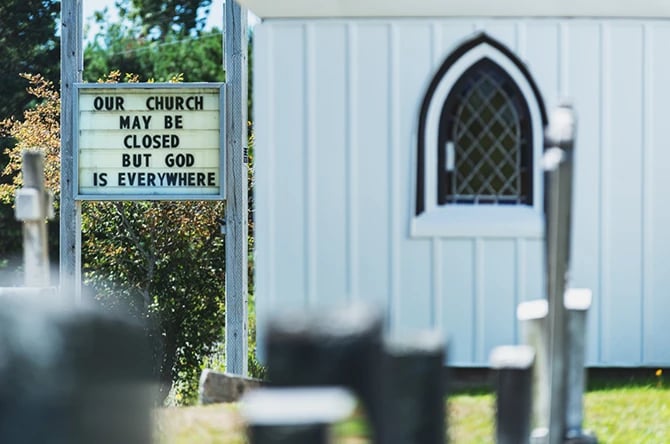
Conclusion
Marketing the church requires a combination of modern technology and traditional marketing techniques to stay relevant in the current times. As churches adapt to the ever-evolving landscape of the digital age, utilizing innovative marketing approaches is essential for building a thriving community for parishioners. This ultimate guide emphasizes embracing creative marketing efforts to nurture a flourishing church community. By using digital platforms, Google ads, direct mail, community-centric events, podcasts and livestreams, special events, and an interactive website design, churches can go beyond Sunday services to create a lasting impact and reach a broader audience.
Cactus Mailing is a reliable partner dedicated to supporting churches in their mission to connect with their communities through impactful and budget-friendly direct mail campaigns that supplement your church marketing strategy.
We offer postcard printing services for direct mail marketing. We provide a comprehensive solution for designing, printing, and mailing postcards tailored to specific business or organizational needs. Our service emphasizes high-quality printing and custom designs, allowing users to create visually appealing and effective postcards for their marketing campaigns. We also have a mailing list for various audiences and provide insights and resources on effective direct mail strategies. We offer a one-stop platform for businesses leveraging postcard marketing for outreach and engagement.
Our postcards have helped various churches get leads, boost awareness, and grow revenue. Let us help you create a church postcard design to achieve your marketing goals!

 Cactus Mail Team: Apr 15, 2024
Cactus Mail Team: Apr 15, 2024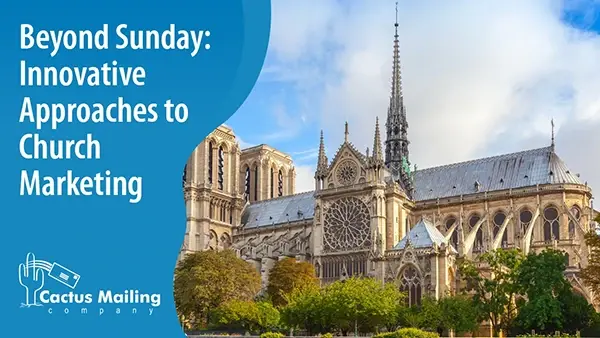
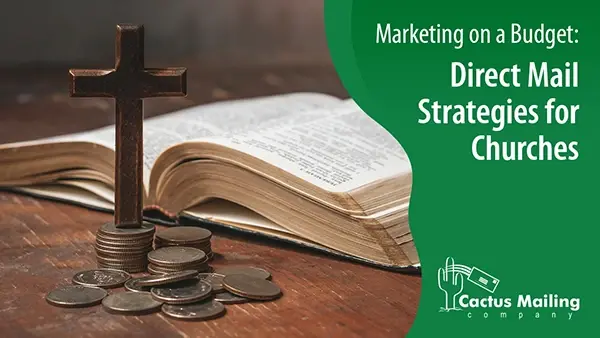
 Mike Ryan
Mike Ryan